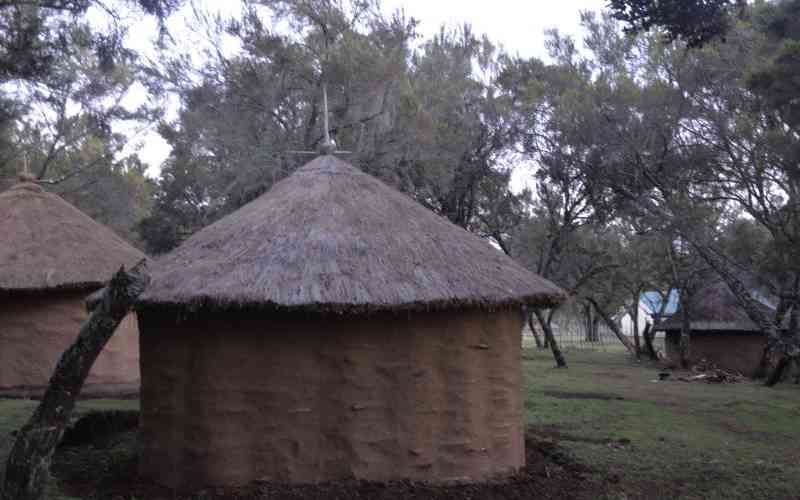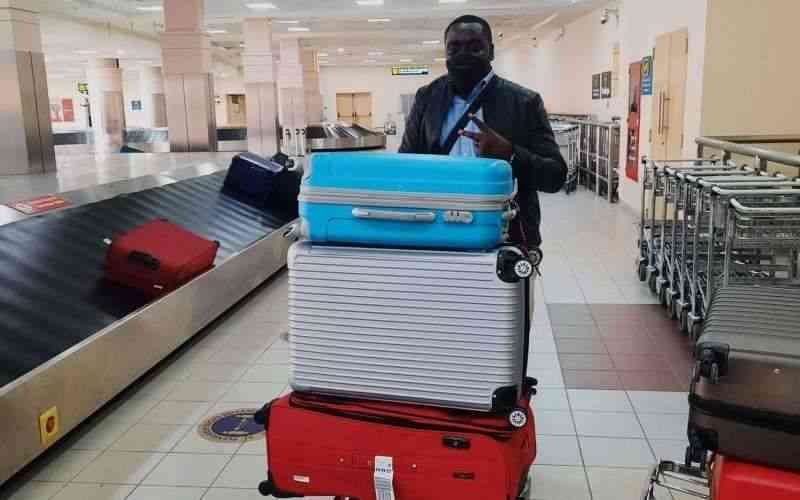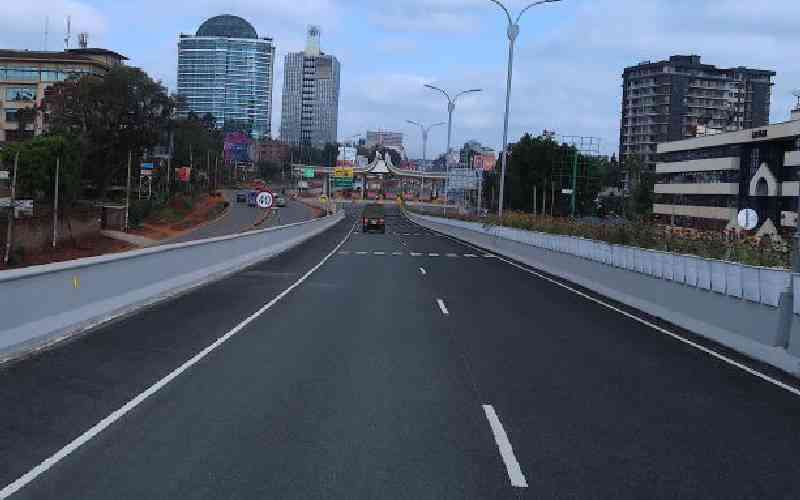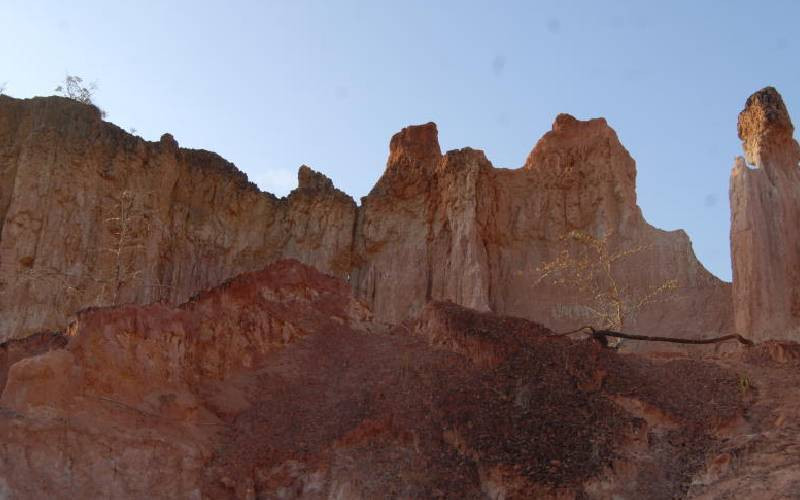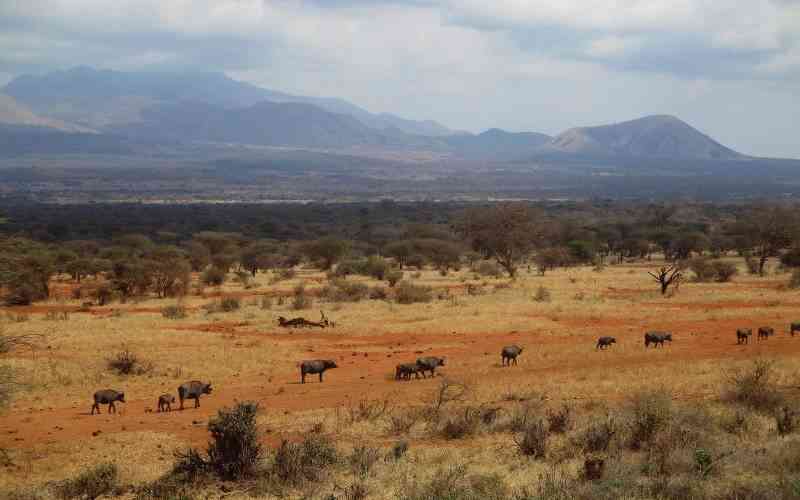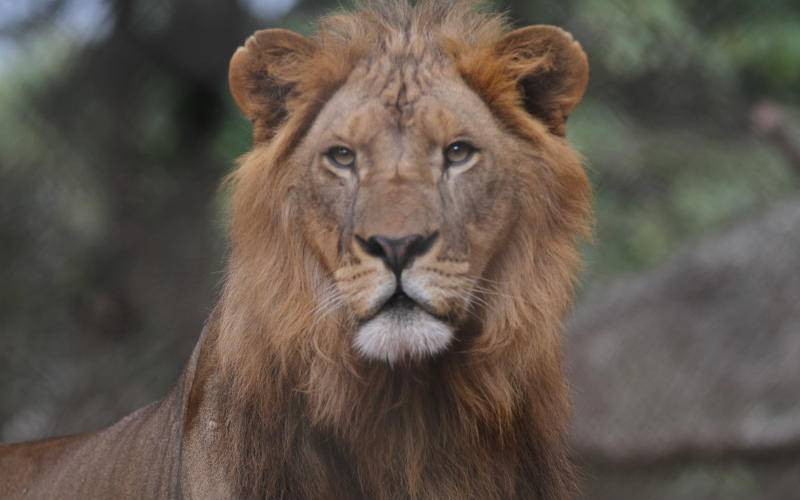
To travel, it is said, is like reading an exciting book. And if you do not travel, then you only read one page of the book. How true.
As the country played host to international visitors courtesy of the just concluded Magical Kenya Travel Expo this week, I took that as the cue to discover some hidden gems in the countryside. Kenya is like a scintillating diamond that reveals unique hues wherever light strikes.
The northern Kenya circuit always fascinates me. It is the wide-open spaces that are home to Kenya's largest animal population outside of government-protected areas. But it is the beautiful people of northern Kenya who hold the true promise of resilience in the often hostile climate.
My previous forays to this region have left me in awe as men, women and children glow in the face of adversity with the hope that tomorrow will bring better tidings than today. In the not-too-distant past, this was a no-go zone. Bandits ruled supreme. They still do in a few pockets. It is here that the infamous Shifta wars took place, egged on by secessionist ideals.
With peace restored in large swathes of northern Kenya, the vaunted beauty cries out for attention like a bespoken lady.
And so on Saturday last week, I embarked on yet another trip to the north. To be fair, the region is opening up, thanks to large infrastructure projects. The dualling of the Kenol-Marua road is well underway. It will reduce the time spent on this stretch by a great margin, allowing adventure-loving Kenyans an opportunity to sample the northern circuit.
Leaving the skyscrapers of the city behind, Kioko manoeuvred the van through the light traffic along the Thika superhighway and onto the fringes of central Kenya. A new crop of pineapples is under cultivation between Thika and the Kenol junction, undulating the landscape all the way to Kilimambogo.
Past Makuyu, the land slopes towards the Tana, and despite the river being the biggest in the country, the landscape on both sides is bone dry. But the river's produce is in plenty. Roadside vendors cash in on their catch of the day as they entice those who fancy a meal of fresh fish.
We stop at Sagana for the much-needed bathroom break and to stock up a bit for the rest of the trip. A large store with the curious name Magunas draws travellers like moths to the fire. We weave our way past other shoppers, grab our fancies and get out in record time.
Our next stop is Nanyuki, or mwisho wa reli. The northern branch of the railway terminated here, and like its famous predecessor, the 'Lunatic Express', nobody remembers for sure what it was meant to carry. Nanyuki, the gateway to northern Kenya, is a town that never sleeps.
It hosts the last vestiges of the 'Happy Valley' crowd whose amorous escapades are staples of legends. Again, nobody knows when the party begins, and certainly, when it ends.
The presence of a British army unit in the town has only lit the fire a degree higher.
Nanyuki has one of the oldest settlements in this region. It is called Majengo. (And why are all old settlements in Kenya called Majengo?). And there is the new, like Cedar Mall, a shopping complex with all modern conveniences.
There are modern vehicle showrooms here, but one still spots the old Land Rover in the parking yard, the owner (usually white) sauntering in the mall in old khaki shorts, Safari boots and in his hand, a weaved African basket.
The rest of the route, the Nanyuki-Rumuruto Road, is uneventful. A fence separates the wildlife-rich Ol Pejeta Conservancy from the human settlements. But one can still spot some zebras, giraffes, and on occasion, elephants.
Half an hour after Nanyuki and a signboard directs us to Mutara Conservancy, a 20,000-acre unspoilt piece of Africa and home to four of the Big Five namely; lion, leopard, buffalo and elephant.
At the heart of the conservancy is a camp, Jambo Mutara, and our home for the night. Nestled on a cliff overlooking a waterhole, the camp combines creature comforts with natural elements.
An infinity swimming pool contrasts sharply with the 'wild' watering home several metres into the bush. One is at home taking a shower inside the tent or opt for a bathtub on the veranda overlooking the waterhole (if you do not mind pesky monkey stares!).
Later in the afternoon, we opted for a bush walk in the company of the affable guide-cum-security officer, Abraham. The young man is well known in conservation circles here for his affinity for wildlife, even creating a blog for his stories. More about him in a future post.
Clutching to his rifle, we walked, passing an inquisitive giraffe along the way. Startled waterbucks stood alert, watching our every step. We paid attention to every chirping bird, trying to identify the sounds. We examined every carcass to determine the lost 'soul'.
We ruffled the hollow seeds of the 'whistling thorn', or vachellia drepanolobium, whose nodes are home to a species of ants that feed on the sap. To keep their food source secure, the ants create commotion and repulse any animal that tries to browse. Talk of a truly symbiotic relationship.
Our route back to camp brought us in line with a herd of buffaloes, perhaps 30 strong, or more. These, as any warden will tell you, are among the most dangerous animals on land. With the calm coaching of Abraham, we made a wide detour and got out of harm's way.
At twilight, we made our way (driving this time) to a spot near a dam where some bonfire and good company awaited.
The tiny sliver of the new moon rose in the western sky. Overhead, the milky way galaxy spread across like a fluffy gauze. To the northeast, Jupiter shone like a beacon in a dark sea. At last, Laikipia, and Mutara in particular, was at peace.
 The Standard Group Plc is a multi-media organization with investments in media platforms spanning newspaper print
operations, television, radio broadcasting, digital and online services. The Standard Group is recognized as a
leading multi-media house in Kenya with a key influence in matters of national and international interest.
The Standard Group Plc is a multi-media organization with investments in media platforms spanning newspaper print
operations, television, radio broadcasting, digital and online services. The Standard Group is recognized as a
leading multi-media house in Kenya with a key influence in matters of national and international interest.

